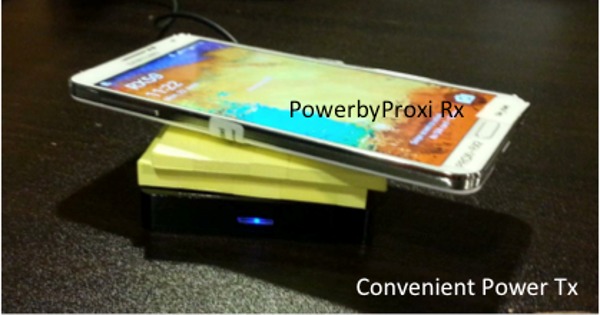
Wireless charging, once seen simply as an eccentricity, is becoming more common as more devices and accessories advertise the feature. Taking the widely-used Qi standard to the next level, the Wireless Power Consortium (WPC) revealed what’s in store in the upcoming version 1.2 of the specification: resonant charging or the ability to charge a device without having it lie directly on the charging plate.
The current Qi v1.1 specification only has support for a gap of 5 to 7 mm between the power transmitter, like a charging pad, and the receiver, like a smartphone. The WPC, however, believes there is definitely room for improvement and so has invested in resonant inductive technology to take wireless charging even further, literally. Last month, the WPC met at Leeuwarden to give an update on the planned v1.2 of the specification and the results they are now sharing are quite impressive. Regular v1.1 receivers are now able to extended the charging distance from 7 mm to 30 mm. But with v1.2 prototypes, it can be extended even further to 45 mm.

Before you write this off as a minor improvement or a simple gimmick, imagine the implications of this distant charging. The first is that wireless chargers will no longer be limited to the present forms they take today, basically flat or inclined plates that require users to place their devices directly on the surface. Now power transmitters can be embedded deeper into everyday household objects, like furniture, desks, and other structures. Second, charging multiple devices will also be easier. Qi v1.1 actually already supports charing multiple devices at the same time but, given the spatial restrictions above, it is hardly ideal, practical, or cheap. In v1.2, a single transmitter can charge multiple devices no matter where they are placed, as long as they are within a 45 mm radius.
Users and manufacturers of current Qi-compatible devices and accessories need not worry about the new spec, as the WPC is making sure that both versions will be compatible with each other. That is, a v1.1 receiver can be charged on a v1.2 transmitter, and a v1.2 receiver can be charged on a v1.1 trasnmitter, albeit withouth the maximum benefits of the new distance. It almost does sound like a dream come true, except that the WPC will still need to actually finalize this new version of the specification before manufacturers can even start applying it to products that we can all actually buy.

SOURCE: Wireless Power Consortium (1), (PDF)










Dude, your typos are killing me…. Fix em!